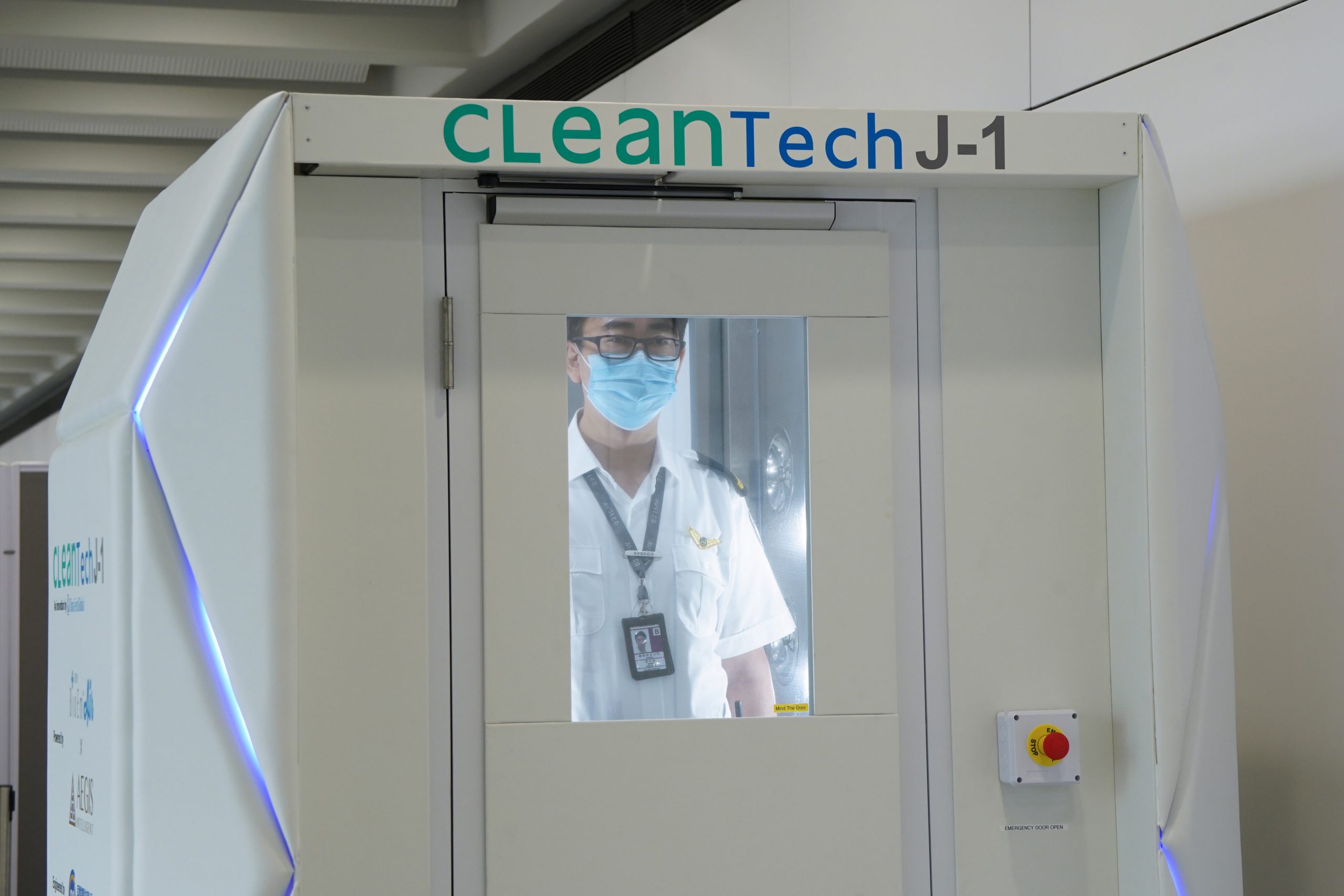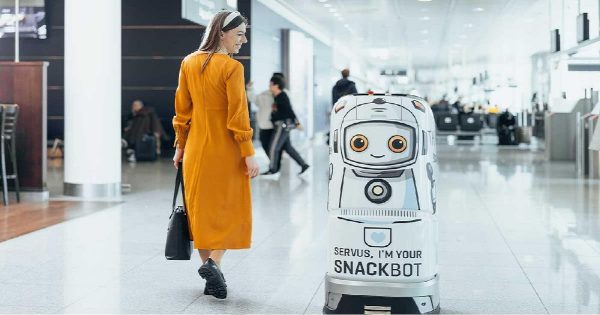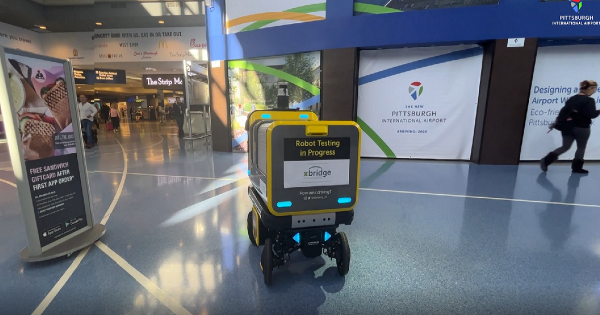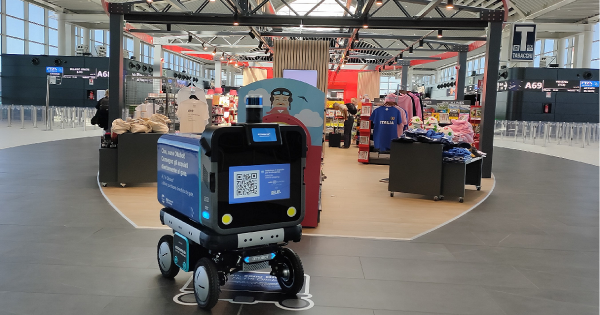Hong Kong International Airport (HKIA) is applying the latest disinfection technologies, including disinfection channels, antimicrobial coating and autonomous cleaning robots to protect passengers and airport staff from COVID-19.
Disinfection channel
The airport is testing “CLeanTech”, a full-body disinfection channel facility.
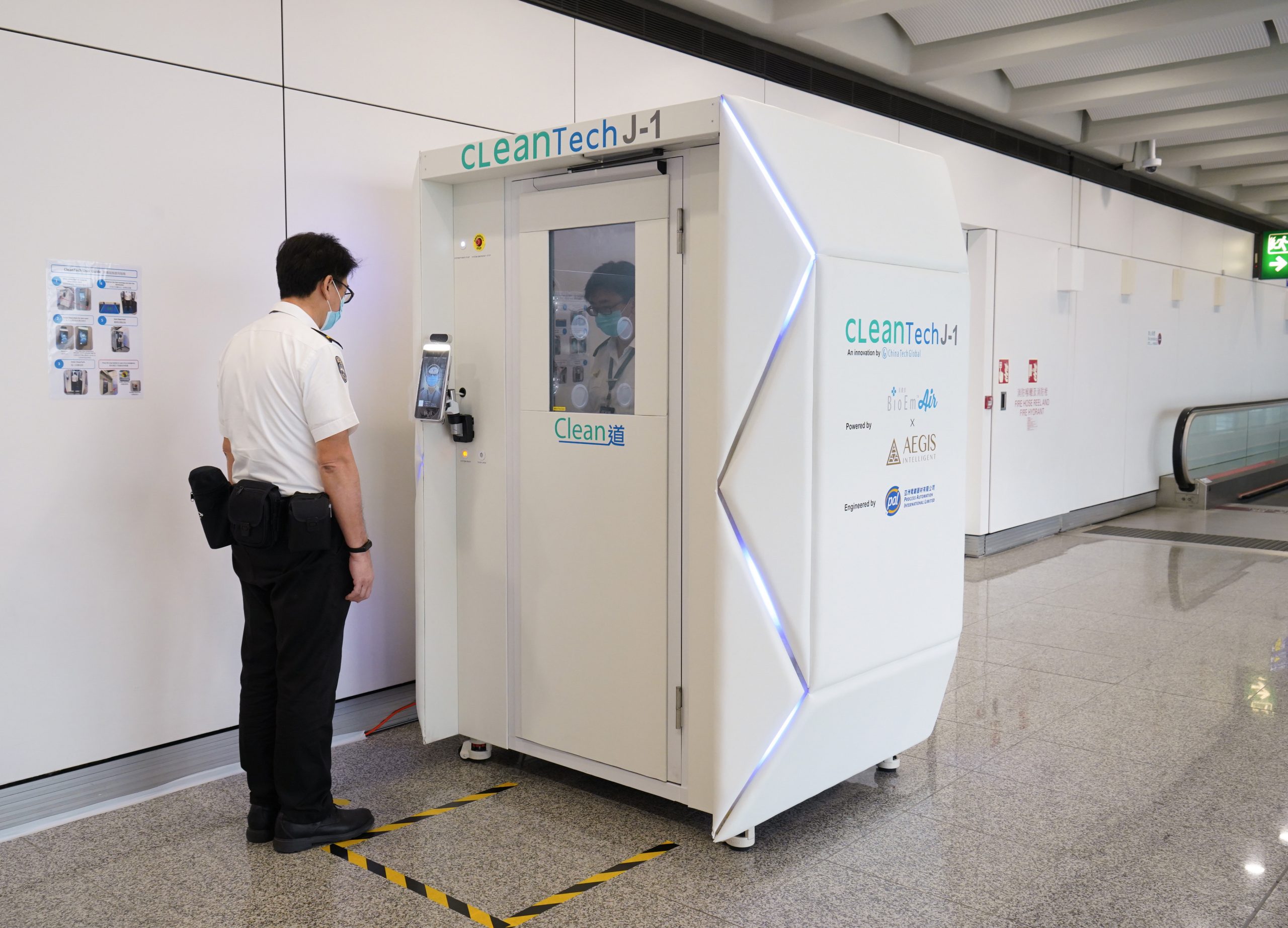
People using the facility will have a temperature check before entering an enclosed channel for the 40-second disinfection and sanitizing procedures. The interior surface of the channel is equipped with antimicrobial coating which can remotely kill virus and bacteria on human bodies and clothing by using the technologies of photocatalyst and “nano needles”. A sanitizing spray is also applied for instant disinfection. The channel is kept under negative pressure to prevent cross-contamination between the outside and inside environment.
Currently, the facility is designated for use by staff who take part in public health and quarantine duties at the airport in relation to arriving passengers.
Antimicrobial coating
HKIA is also conducting a pilot test of applying antimicrobial coating at all passenger facilities.
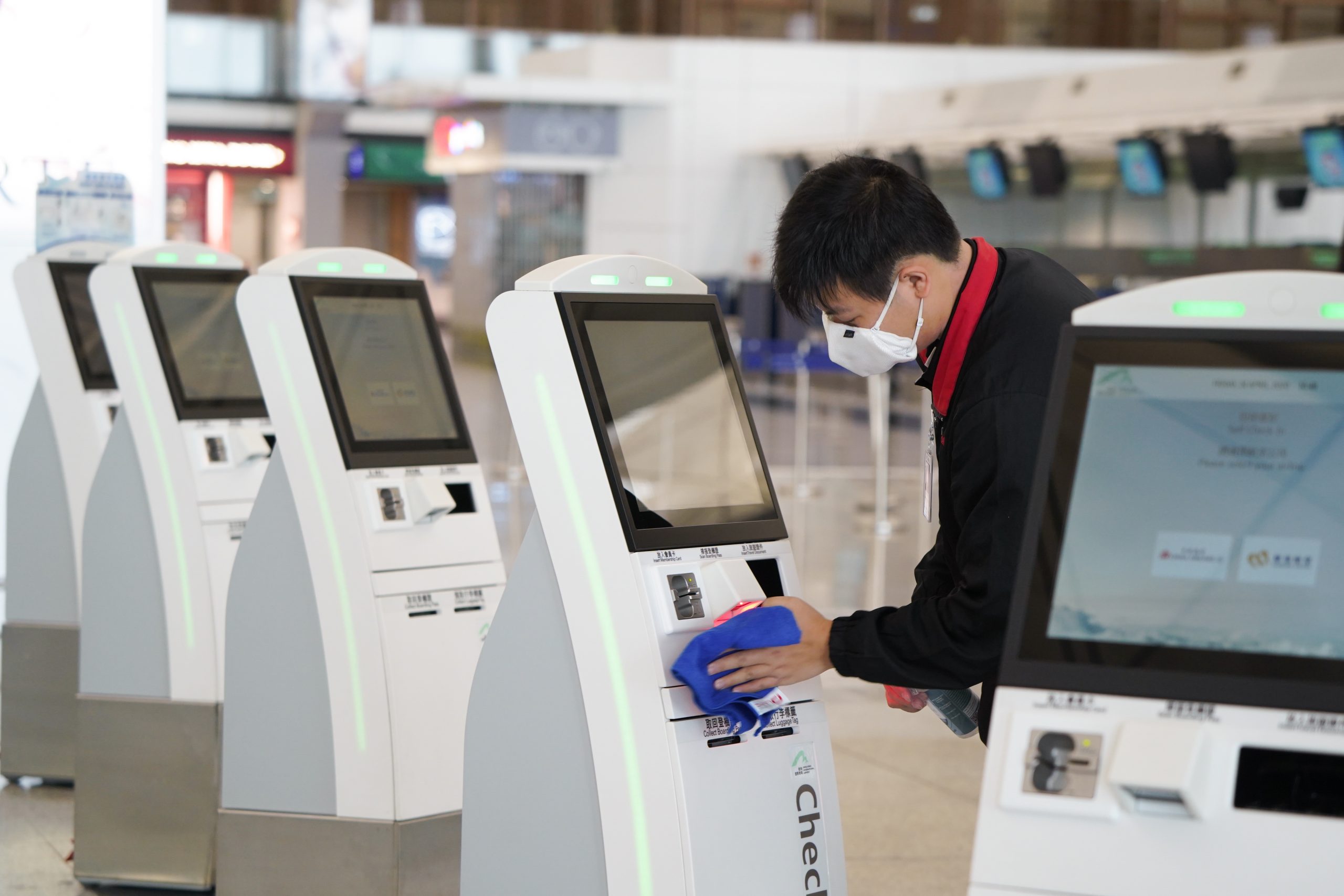
An invisible coating to destroy germs, bacteria and viruses is applied to high-touch surfaces in the terminal, including handles and seats of Automated People Movers and passenger buses, smart check-in kiosks and check-in counters, toilets, seating area in the terminal, baggage trolleys, elevator buttons, and more.
After completion of the trial in May, the HKIA will consider implementing it as a long term disinfection measure.
Autonomous cleaning robots
HKIA has also deployed cleaning robots to ensure thorough disinfection of public areas and passenger facilities.
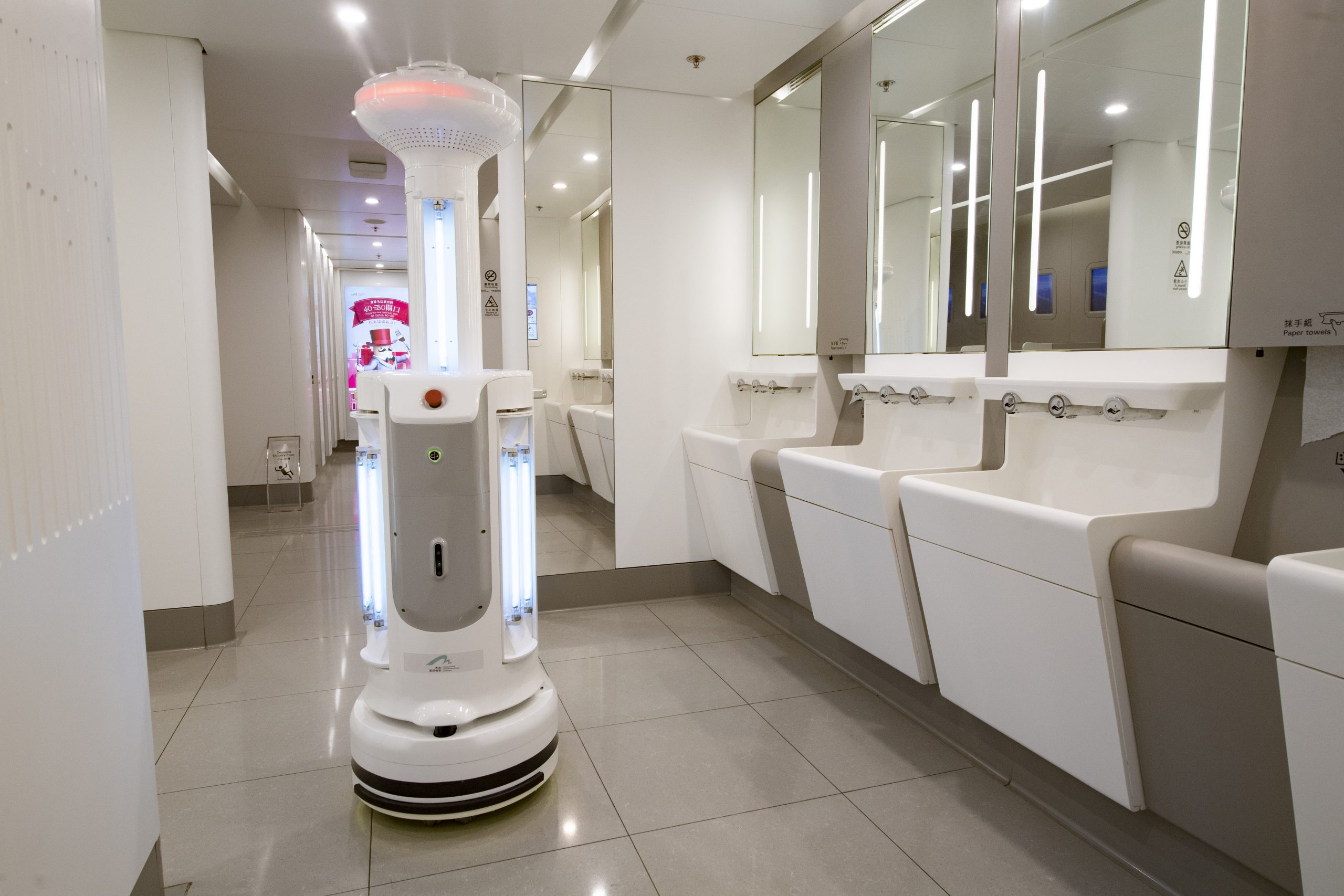
The Intelligent Sterilization Robot, equipped with ultra violet light sterilizer and air sterilizer, is deployed round-the-clock in public toilets and key operating areas in the terminal building.
The robot can move around autonomously and sterilize up to 99.99% of bacteria in its vicinity, including both the air and object surfaces, in just 10 minutes.
N.B. Image credit: Hong Kong International Airport
